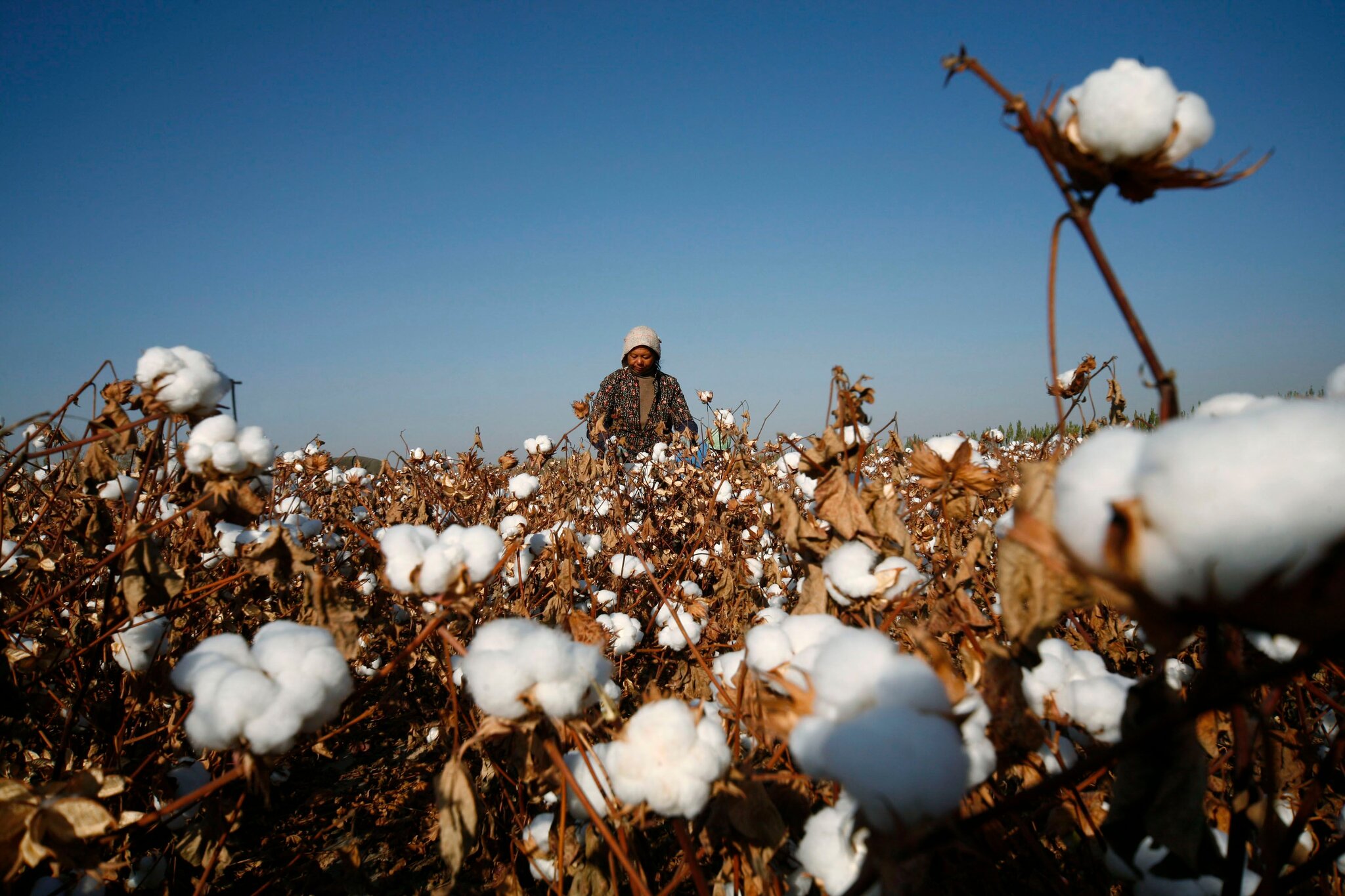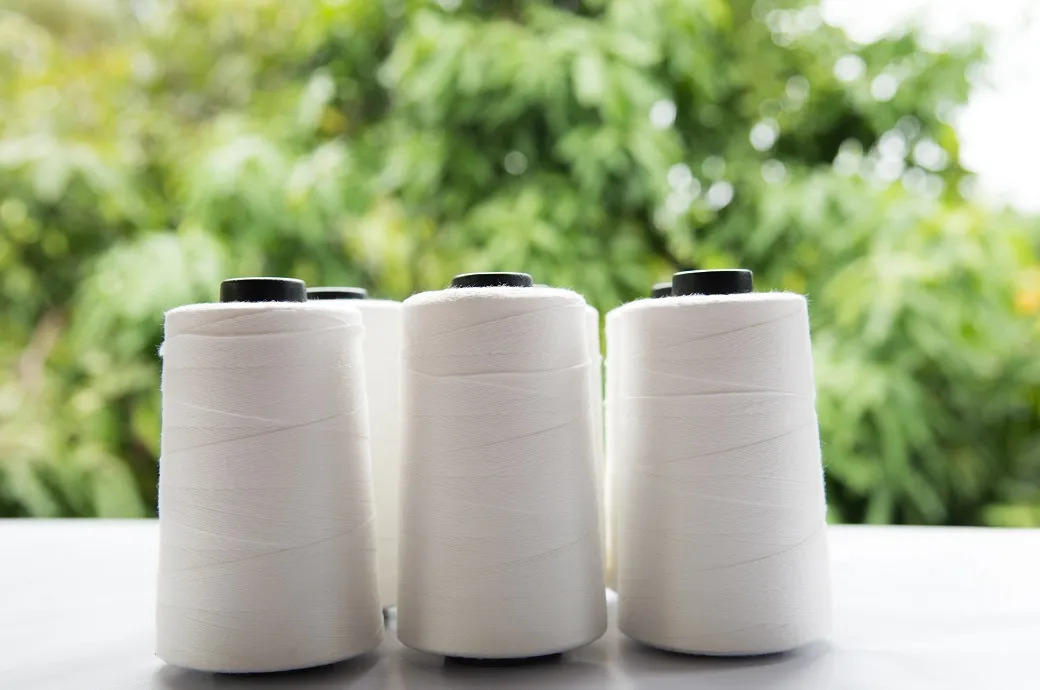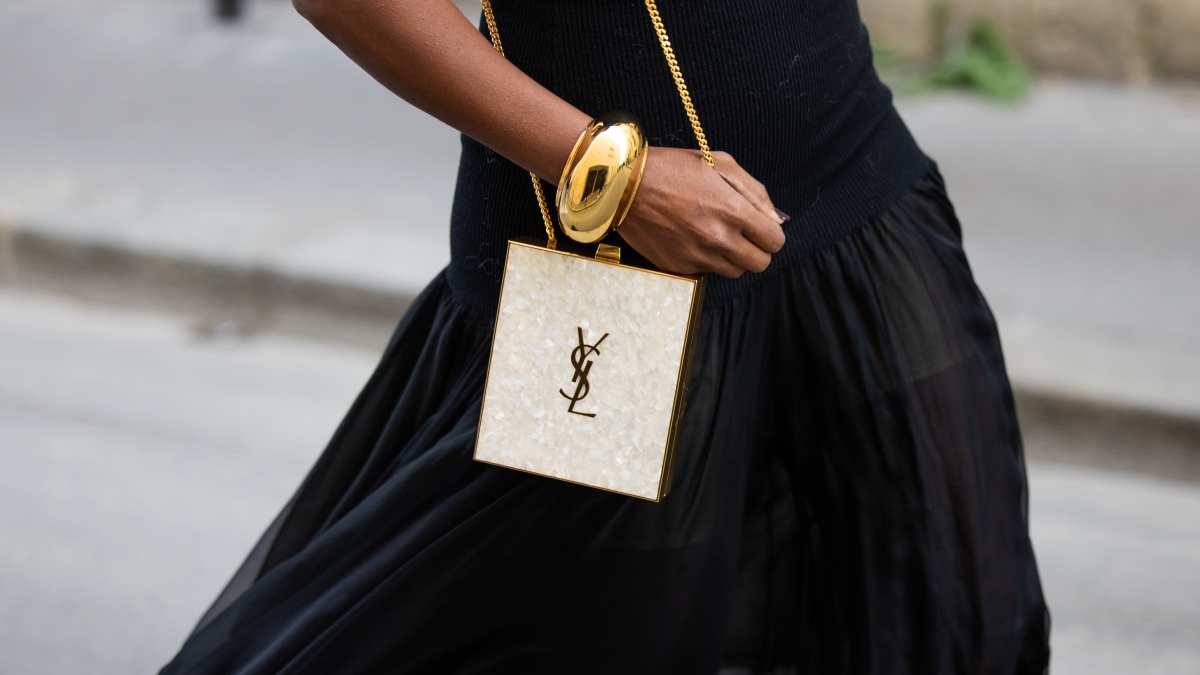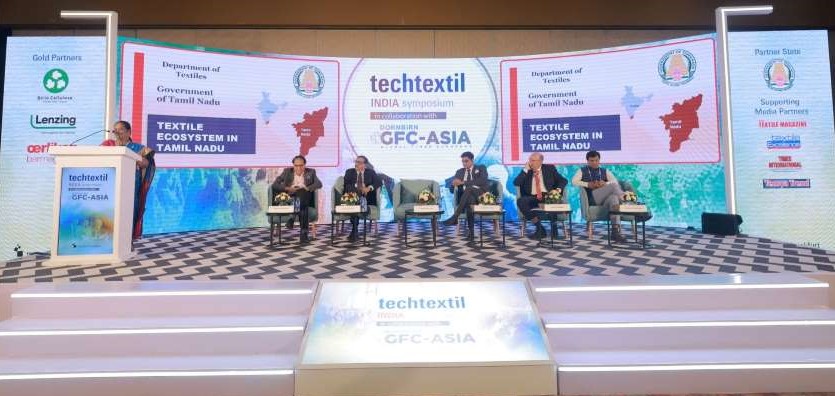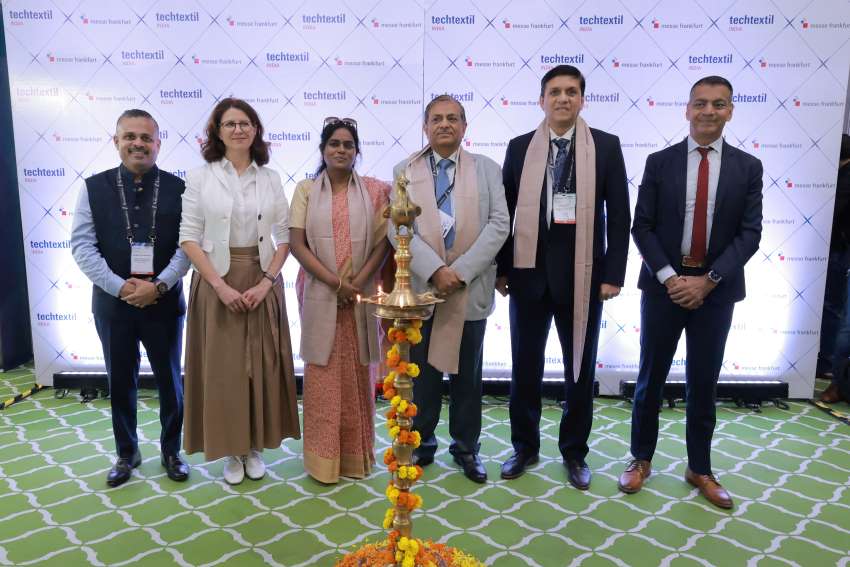FW
Given the rise in Ice Futures at the New York Stock Exchange, Brazilian cotton prices continued to head North in late September. The prices of the commodity also grew on expectations of low cotton availability until the beginning of harvesting of the new crop. Cotton buyers too expressed higher interest in purchasing, while sellers remained firm in asking prices.
The Centre for Applied Studies in Applied Economics (CEPEA)/Escola Superior de Agricultura (ESALQ) Index for payment in 8 days for cotton type 41-4, delivered in São Paulo increased 2.77 per cent closing at BRL 2.5244 or $0.7764 per pound on September 30. Quoting data from the Brazilian Commodity Exchange, the CEPEA said 73.8 per cent of the Brazilian 2014/15 cotton crop forecast at 1.563 million tons had already been traded until late September. Of this, 50.8 per cent was sold in the domestic market and the rest in the international market.
As regards to the 2015/16 crop projected at 1.289 million tons, 60.4 per cent had already been traded in September. Of this total, 43.9 per cent was sold in the local market and the rest in the global markets.
Yarn Expo Autumn, one of the most important annual events in the Asian yarn and fibre industry, is all set to return next week. To be held from October 11 to 13 at the National Exhibition and Convention Center , Shanghai, the Fair would have a record number of exhibitors and exhibition space.
While the number of exhibitors has seen a rise from 258 in 2015 to over 270 this year, the exhibition area has been enlarged by 35 per cent to 11,500 sqm. Among the participants would be people from 12 countries and regions like Mainland China, Hong Kong, Bangladesh, India, Indonesia, Korea, Pakistan, Singapore, Switzerland, the US, Uzbekistan and Vietnam.
Yarn Expo has long been renowned for its product diversity, with a wide range of exhibitors from both established yarn and fibre producing countries as well as emerging producers. Among these are the India Pavilion and Pakistan Zone with the former consisting of 36 companies and the latter of more than 20 exhibitors showcasing competitively priced, high quality cotton yarns. One up-and-coming country is Uzbekistan, whose exhibitors have proved popular in recent editions and are bringing their cotton yarns to the Chinese market this edition.
Apart from cotton yarns, there also exists a strong demand for synthetic yarn and fibre products in China that overseas suppliers from Indonesia, Korea, Taiwan and Thailand are looking to take advantage of the Expo. Last but not least, the Birla Pavilion will make its debut in Yarn Expo. Fourteen well known manufacturers specialising in Birla Modal, Birla Spunshades and Birla Viscose fibres will showcase their latest collections at the show. Given their advantages compared with traditional dyed products, including avoidance of dyeing, lower consumption of water, lower cost of production, and longer lasting and uniform colours, Birla Spunshades fibres are sure to attract much interest from buyers at the fair.
According to the Aditya Birla Group, the organiser of the Birla Pavilion, this product has a lot of potential in the Chinese market as it can provide new opportunities for manufacturers who are looking for new ways to grow their business. Birla Spunshades can be widely applied in woven wool fabrics, sweaters, leggings, home textiles, denim and even the non-wovens sector.
A surge in demand for 19 micron and finer wool helped lift the Awex benchmark Eastern Market Indicator 10 cents back to 1300 c/kg this week, said a report of the Australian Wool Innovation Market. Awex senior market analyst Lionel Plunkett revealed that delayed shearing due to widespread wet weather as well as a public holiday in three states contributed to a small national total of 27,627 bales this week.
Brokers passed in 5.4 per cent of the 36,849-bale offering with the $A-US exchange rate at US76 cents and the EMI in US dollar terms down 5 cents to US 988 cents. This is said to be the smallest total for a sale in the July-to-December period in three years, Plunkett added. After eking out a 3-cent increase last week, there was further recovery of this sale.
This lifted the Awex-Emi to a 10 cent gain and closing the week back at 1300 cents. Further, the report said that an unseasonal lack of quantity due to adverse weather conditions combined with a spike in demand for prompt to near-shipment has led to the evener pricing.
Vadodara-based manufacturer of organic, inorganic and fine chemicals, Deepak Nitrite Ltd (DNL) has received an order from the Telangana State Pollution Control Board (TSPCB) to close one of its three manufacturing units situated at Hyderabad. The company manufactures DASDA (diamino stilbene disulfonic acid), a chemical used in the manufacturing of optical brightening agents (OBA) at its Hyderabad facility. Incidentally, the unit regarding which the order has been received happens to be a processing unit.
As a fall out to the closure order, the company’s DASDA production will be affected. The company said that it is taking all the necessary effective steps to correct the anomalies pointed out by the TSPCB authorities in the manufacturing system in the said unit at Hyderabad facility.
The chemical is used in the production of optical brightening agents (OBAs), which are used widely by the manufacturers of paper, textile and detergent. DASDA has been in short supply as key production units were closed for environmental reasons in China, which is the leading producer of this chemical in the world.
Deepak Nitrite is the only fully-integrated manufacturer of fluorescent whitening agent (FWA). This is commonly known as optical brightening agents in India having vertical integration from toluene to para-nitrotoluene (PNT) and further into DASDA and OBA.
"In a major shock for the textile industry, Welspun India, a textile major witnessed a major slump on Dalal Street. The slump was inevitable as Welspun’s US-based client, Target Corporation, announced termination of business with India’s largest home textile exporter, as the later was accused of using another variety of cotton instead of Egyptian cotton in the production of sheets. Target sells luxury bath and bedding products under the Fieldcrest brand in the US."
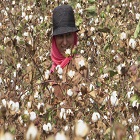
In a major shock for the textile industry, Welspun India, a textile major witnessed a major slump on Dalal Street. The slump was inevitable as Welspun’s US-based client, Target Corporation, announced termination of business with India’s largest home textile exporter, as the later was accused of using another variety of cotton instead of Egyptian cotton in the production of sheets. Target sells luxury bath and bedding products under the Fieldcrest brand in the US.
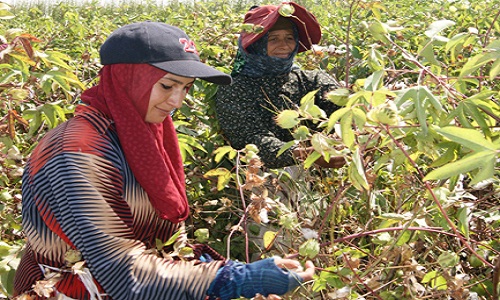
Consequently Welspun India’ shares tanked reducing its market capitalisation by more than Rs 5,000 crores that week. To cope with the crisis in its sourcing from vendor Welspun has now appointed Ernst & Young to audit its supply systems and processes. However, this incident has prompted other US-based retailers, such as Walmart and Bed Bath & Beyond, to investigate cotton products sourced from the company.
This incident however is not an odd one as there have been several such reports which hint at random mislabeling and counterfeiting in the industry. Recently, Cotton Egypt Association, the world’s only trademark and licensing authority for the commodity has found around 90 per cent of the products claiming to use Egyptian cotton did not contain the premium cotton variety at all.
Varied testing boosts counterfeiting
Experts believe rampant counterfeiting results from the lack of tools to verify the authenticity of Egyptian cotton. Cotton Incorporated, a US-based industry-funded body, says there is no physical test to determine the authenticity of cotton products once the fibre is converted into yarn. But agencies like the Cotton Egypt Association have turned to DNA testing of cotton products. The recently practiced the CTAB (cetyl trimethylammonium bromide) method requires DNA extraction from Egyptian cotton fibres throughout the supply chain, from farming till the finished product. The isolated DNA is then used to identify varieties of cotton, thus establishing the authenticity of the product. US-based company Applied DNA Sciences introduced a DNA authentication technology which can identify premium extra-long staple kinds of cotton that have been “blended” with shorter staple cotton. However it is still in its early stage of testing.
In fact, Egyptian cotton (Gossypium barbadense), a product of the country’s moderate climate and fertile soils of the Nile basin, is considered the finest variety of cotton in the world. Fabrics made from this extra-long staple (ELS) fibre are softer, more durable and fetch the highest prices. However, with increased global pressure on low cost production, much of ELS cotton manufacturing and final assembly has migrated to other countries, mainly China, India, Portugal, and Pakistan. Now the incentive to substitute lesser quality Upland cotton in place of the premium ELS cotton is high. It is encouraging mislabeling and counterfeiting. Also the declining supply of Egyptian Cotton has given way to labeling other less standard cotton as Egyptian Cotton. Currently, only 55,000 ha of land is under Egyptian cotton cultivation.
The production of Egyptian cotton has reduced from 345,000 tonnes in 1996 to an estimated 45,000 tonnes in 2016. In Egypt farmers now prefer to grow other summer crops. Egyptian cotton is a long duration crop compared to other varieties. Since it is susceptible to pests and depends on specific sowing, growth, and irrigation conditions which are not available everywhere, yield is almost half as that of other varieties. Though Egyptian cotton commands a higher price, the premium is not sufficient to make up for the lower yield. Not only in Egypt ,the slump in Egyptian cotton production has occurred in other countries, including India, China, Pakistan, and Brazil. Global production has decreased by 18 percent to 21.3 million tonnes in 2015-16.
USDA reveals the drop in production is primarily caused by changing customer preferences and availability of new technologies. Over time, consumer preference has shifted towards garments which require short- or medium-staple cotton such as denim and T-shirts and demand has overtaken that of clothing and bed sheets made of extra-long and long-staple cotton varieties. Overall, the scenario makes strong demand for ease of testing and stricter quality standard protocol.
Intex South Asia, a textile sourcing show, will be held in Sri Lanka from November 15 to 17. Intex South Asia is a meeting point for makers of the best fibers, yarns, apparel fabrics, denims and allied services from around the world to interact with buyers from the biggest manufacturing and consuming regions.
will showcase more than 200 exhibitors from 15 countries including India, Pakistan, Sri Lanka, Bangladesh, China, Korea, Taiwan, Hong Kong, Thailand, Indonesia, Singapore, Switzerland, Turkey, Australia and the US. Buyers from countries like India, Pakistan, Bangladesh, Nepal, Dubai, UK, Italy, Australia, Austria, Spain, Germany, Hong Kong, Taiwan, Malaysia, Uganda and Nigeria are expected.
The show will host multiple seminars with industry experts providing pertinent analyses for better understanding of global developments and their impact on the South Asian industry. Turkey and Switzerland will participate for the first time.
A networking reception will have 600 industry buyers from South Asia and other regions interacting with international exhibitors. A fashion extravaganza will focus on the transformation of innovative textiles into contemporary garments featuring collections from renowned Taiwan-based companies and top companies like Reliance, Bombay Rayon Fashions, Mekotex and Woolmark etc. Woolmark will make a presentation on merino wool.
The Interbrand ranking is out. And once again the world's most valuable brands features a strong presence of luxury labels, online retail specialists and apparel distribution giants. For example, Amazon has climbed eight places overtaking Disney and Facebook.
While Nike stands 18th, just ahead of Louis Vuitton and H&M, Gillette ranks 24th and Zara 27th. On the other hand, eBay, has slipped down to the 32nd position, two places ahead of French label Hermès. L’Oréal, stayed within the top 50 by ranking 45th, with Gucci in 53rd place ahead of Colgate in 55th and Adidas in the 60th. Cartier is in 62nd place, followed some distance away by Tiffany & Co in 74th. Italian fashion label Prada stands on the 82nd position just ahead of British brand Burberry that ranks 83rd. As for Dior, it stepped in 89th position, ahead of Ralph Lauren which held on to 98th.
The Interbrand ranking is based on three elements: financial performance of products and services, influence a brand has in the choices of consumers and a brand's ability to sustain a price premium and guarantee a revenue stream for the Corporation.
By making an investment of $9 million, Ludhiana -based KG Exports is coming up with a new factory at an investment of $9 million. K G Exports tees to France. The new unit will be built across 4 acres of land and production is likely to start next year. Currently, the company has the capacity to manufacture 3,000 pieces daily. And with the new unit in place, the target is being raised to 10,000 pieces per day. It will also explore new markets and will work with new buyers.
Harish Dua, MD of KG Exports says the new unit will be a green facility. Since the last three years, the company has been upgrading its unit by investing Rs 5 crore in machinery for knitting, stitching and value addition, he added.
Dua, who is also the president of formed Knitwear and Apparel Exporters Organization, says he is expecting 200 members to join the association in next one year. He further points out that Ludhiana is trying to change its image as buyers are not aware about the strength of this knitwear hub and are focusing more on Tirupur.
Manufacturers of garment and leather as well as laundry and textile cleaning technology that were earlier grouped in VDMA will become VDMA Textile Care, Fabric and Leather Technologies. The new name reflects the industry’s strong international approach.
Also each sector is represented in the Association viz. manufacturers of sewing and garment technology, manufacturers of shoe and leather technology, manufacturers of laundry and textile cleaning technology and manufacturers of machines for processing technical textiles. All of them shall find themselves reflected in the new designation.
A new Board was elected at this year’s industry meeting and Günter Veit, MD of Veit GmbH was re-elected as chairman of the Association for the next three years. Likewise, Klaus Freese, managing director of DESMA Schuhmaschinen GmbH was also re-elected as deputy chairman. In addition, the complete Board of the Association was newly elected.
Surging yarn prices have hit the powerloom units in Tamil Naud’s Erode district. So much so that loom owners have now decided to cut production by downing their shutters once in a week in order to stay in the business by avoiding huge losses. Though loom owners are trying their best to clock a handsome business ahead of Diwali, they are finding it difficult to meet orders as yarn prices have gone up. This was disclosed by K Suresh, President of Erode Powerloom Owners Association (EPOA).
In the current scenario, powerloom weavers are forced to up prices of their products and as a result, sales have come down. There are more than one lakh powerloom units in Erode district and Pallipalayam and Kumarapalayam in Namakkal district. They usually use cotton and Viscose Rayon yarns to make the products.

